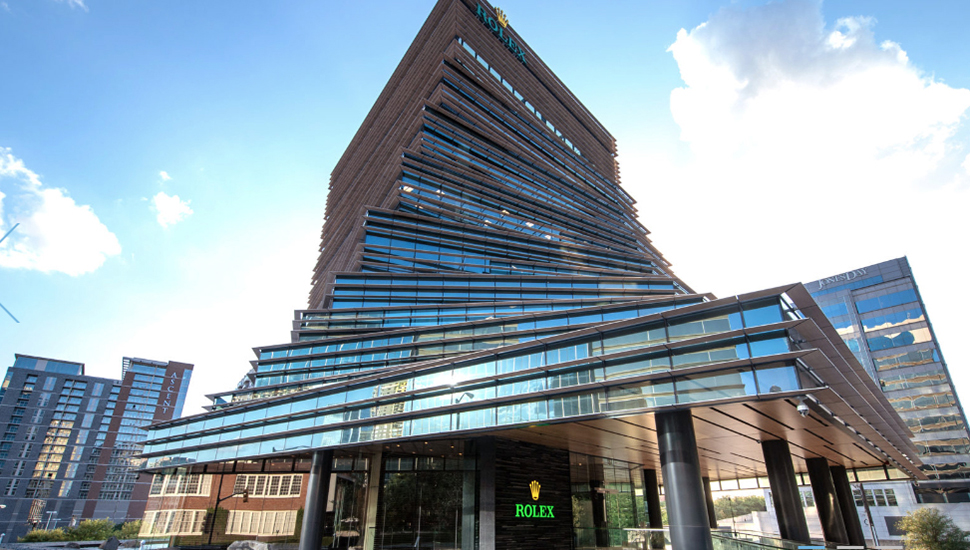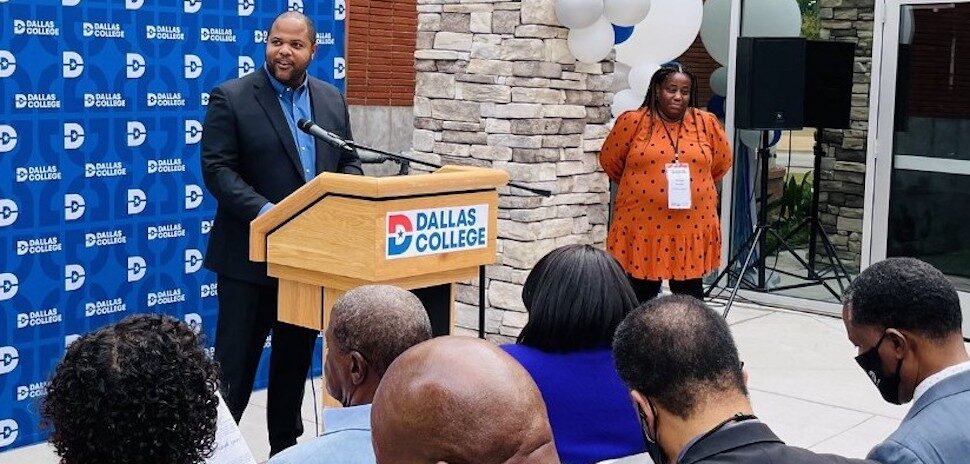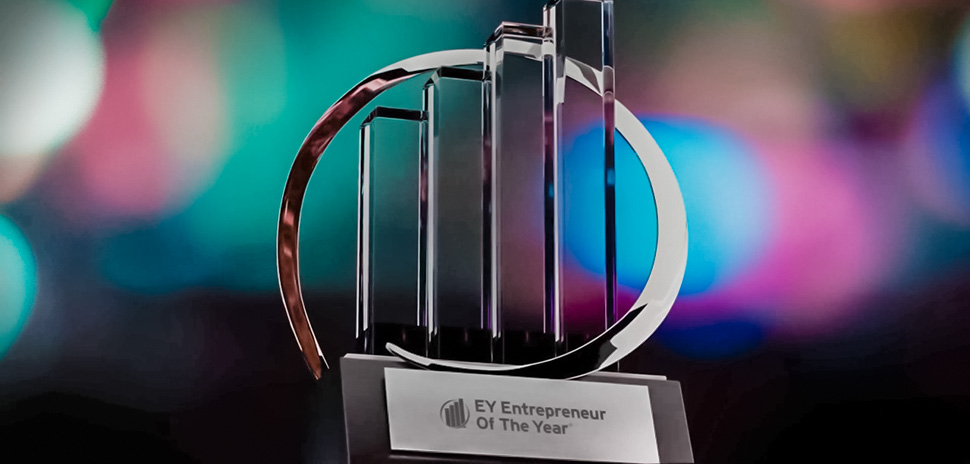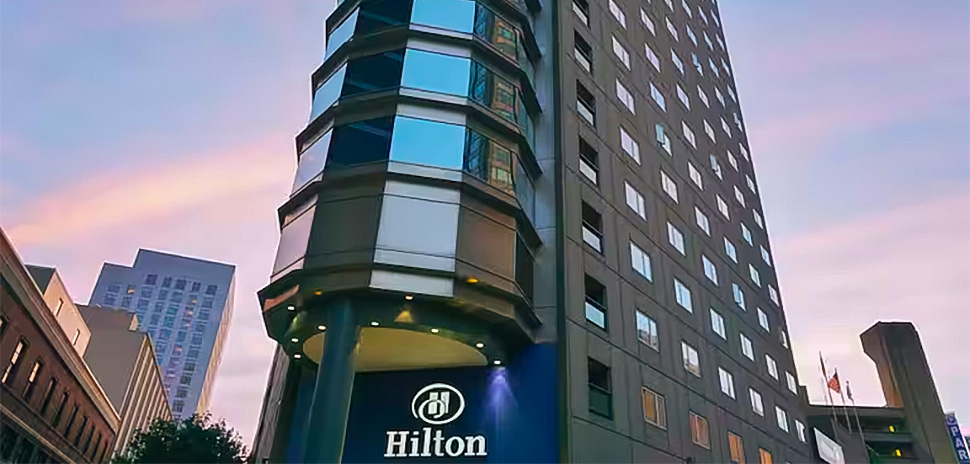Harwood International’s new Rolex Building was named one of the 2019 Global Best Projects winners in Engineering News-Record’s seventh annual competition.
Global Best Projects recognizes the teams that created some of the most iconic design and construction projects from the past year. Harwood won in the Office category.
The Rolex Building is recognizable for its “twisted architecture” design, which consists of stacked, staggered floor plates that give the appearance of a twisting tower. It features a Japanese tiered garden with stone walls, multiple waterfalls, and a reflecting pool. The garden connects The Rolex Building to surrounding streets with pedestrian pathways and a motor court.
The building was designed by world-renowned Tokyo-based architect Kengo Kuma & Associates in collaboration with Harwood’s in-house group, HDF. Back in 2016, D CEO Magazine reported that it was the first office building in Dallas designed by a Japanese architect. It bears the same name as the nearby original Rolex Building—now renamed as Harwood One—that Harwood built back in 1984.
“Like a nice watch, the new Rolex Building is an absolute masterpiece. The design, artistry, and skills that went into this building is unlike anything Dallas has ever seen before,” Jessica Young Reid, Harwood’s director of marketing and PR, told Dallas Innovates.
“In fact, the Rolex Building is the first building in Dallas designed by a Japanese architect and is Kengo Kuma’s first tower in the U.S.,” she said. “As a global company, we pride ourselves in working with international architects and talent, and to receive this award is a true achievement.”
The new seven-story Rolex Building, at 2610 N. Harwood St. in the Harwood District, was finished in 2018 with 56,422 square feet of rentable space. It is the eighth development in the 18-city block master-planned district.
One of the building’s most-unique features is the “castle wall,” a striking stone structure designed by 15th-generation Japanese stonemason Suminori Awata. It resembles ancient Japanese fortress walls.
“The most important step in the process of constructing stone walls is the selection of stones,” Awata told AIA Dallas last year. “Since there are no plans drawn for walls, I go to the quarry where I spend a day or two walking around, memorizing the characteristics of each stone, and figuring out where each stone will be set.”
Harwood International joins a global group of winners
Engineering News-Record, or ENR, is a weekly U.S. magazine that provides news, analysis, data, and opinion for the global construction industry. Category winners for its Global Best Projects often stretch across the globe, with Panama, Ireland, Newfoundland, Zimbabwe, Turkey, and Nepal all being represented this year.
To be chosen this year, construction on each project had to be completed between January 2018 and April 2019. Under the competition’s rules, at least one firm from each project had to be working outside of its home country, and none of the entries could have any construction-related fatalities.
ENR said it had a record number of entries this year—the judges were able to pick the largest, most diverse field of winners yet. 32 projects located in 20 different countries around the world made the final list of winners.
“These outstanding examples show the risks, rewards, and hurdles overcome when designing and building internationally,” ENR’s Scott Blair wrote about the winners.
One other Texas project was honored, Bechtel’s Corpus Christi Liquefaction Train 1, which won in the Power/Industrial category.
![]()
Get on the list.
Dallas Innovates, every day.
Sign up to keep your eye on what’s new and next in Dallas-Fort Worth, every day.






































































